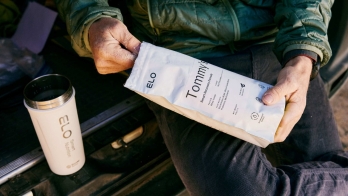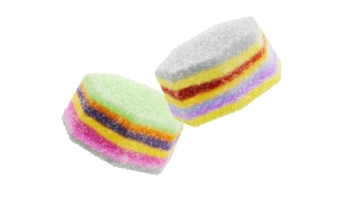The ultimate guide to cinnamon
Often considered a tasty addition to meals, cinnamon has more power for your health than meets the eye. From health benefits to supplements, here’s everything you need to know about cinnamon.
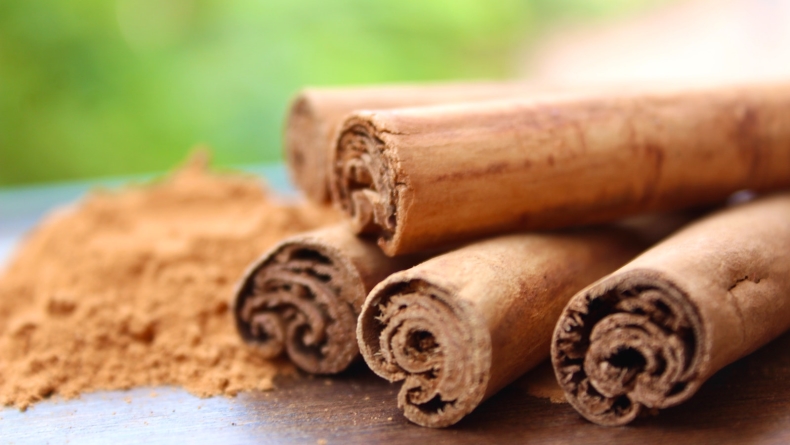
While you more than likely have sprinkled this spice on coffee, oatmeal, or desserts, cinnamon may serve a greater purpose than just being a flavor booster.
Studies show that cinnamon has high levels of antioxidant and anti-inflammatory compounds that can have a positive impact on cardiovascular disease care and weight management.
But does cinnamon live up to the hype, and should you consider supplementation? From antioxidants to health benefits, here’s everything you need to know about cinnamon and why you may want to include it in your supplement routine.
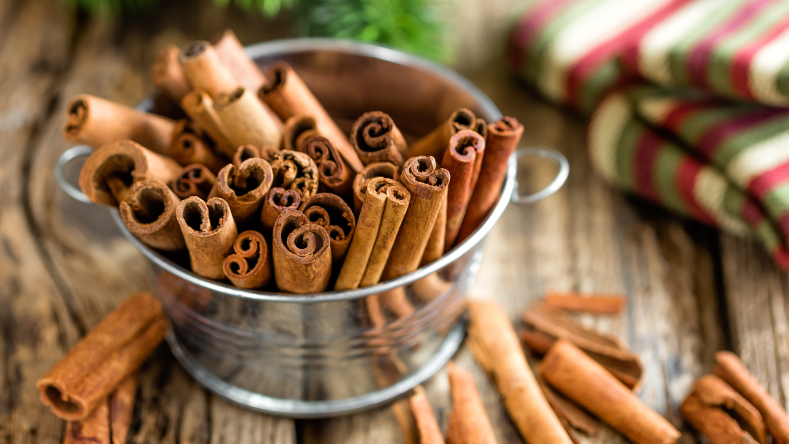
What is cinnamon?
Cinnamon is a spice that has been used as medicine for centuries in its native area of Sri Lanka, China, Indonesia, and Vietnam [ 1 2
Cinnamaldehyde and linalool organic compounds are the primary anti-inflammatory components in cinnamon leaf and bark oils, extracts, and powders [ 3 4 5
What are the most common types of cinnamon?
There are many types of cinnamon (such as burmannii, loureiro, tamala, cassia, and ceylon), and they all have different health benefits based on their chemical components [ 2
Let’s break down a few of the most common types of cinnamon.
Ceylon cinnamon. Also known as “true cinnamon,” ceylon cinnamon is praised for its high levels of cinnamaldehyde and other beneficial chemical components [
6
]. Recent research indicates that ceylon is a powerful type of cinnamon, with a balance of high therapeutic and preventative properties and extremely low levels of coumarin [6
]. However, ceylon cinnamon can be significantly more expensive than other cinnamon options.Cassia cinnamon. This is the most common species of cinnamon used in North America, and is most likely what you taste in your cinnamon rolls and what you buy in the spice aisle of your local grocery store [
7
,2
]. While cassia cinnamon is usually cheaper than ceylon cinnamon, it produces many of the same health benefits. However, cassia cinnamon contains higher levels of coumarin, which can be toxic if consumed at high levels [6
].

What are the benefits of cinnamon?
While cinnamon is often associated with adding a little flavor to meals and holiday treats, it has many health benefits that are often overlooked. This spice is a potent antioxidant and anti-inflammatory agent and has been traditionally used for everything from the common cold to gastrointestinal issues. Here’s what science has to say about some other health benefits of cinnamon.
Note: Most available studies have been conducted with ceylon and cassia cinnamon because of their popular application in the United States healthcare system.
Manage blood sugar levels.
Research suggests that cinnamon supplementation can be helpful for blood sugar regulation in people with type 2 diabetes.
Some studies have found that people who consumed 1- 6 g of cassia cinnamon/day for 1 to 4 months experienced a significant decrease in mean HbA1c and fasting plasma glucose [ 8 9
However, other meta-analyses have drawn contradicting conclusions, which may be due to inconsistent cinnamon dosage, type, or administration method between studies [ 10
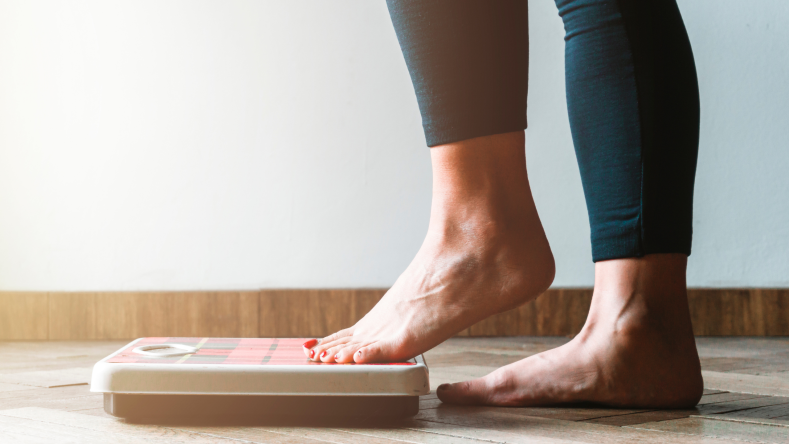
Aid with weight management.
Some studies indicate that cinnamon can be a tool in healthy weight management or weight loss. For example, one research study found that cinnamaldehyde, one of the primary components of cinnamon, triggers fat metabolism in human adipose (fat) stem cells [ 11 12
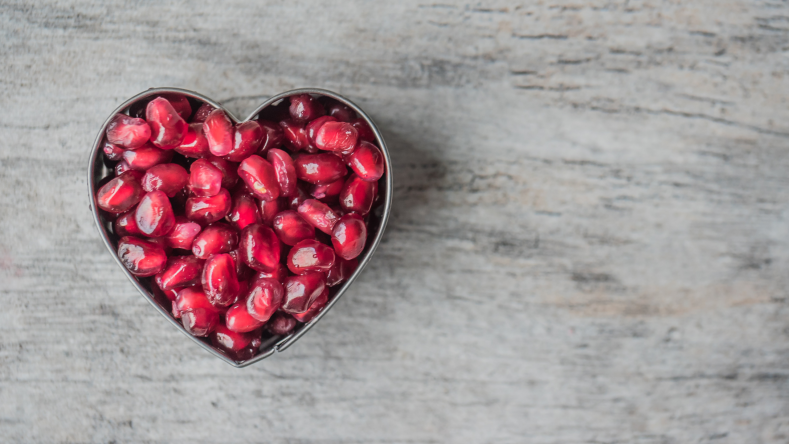
Boost heart health.
Recent research shows that cassia and ceylon cinnamon may improve health in people with cardiovascular diseases, as it can help optimize blood sugar, blood pressure, triglyceride, and high cholesterol regulation [ 13 4 14
Emerging research also indicates that cinnamon may moderately increase blood flow to the heart and may reduce the risk of heart attack and stroke [ 15
Improve shelf life.
Have you seen cinnamon unexpectedly on some food labels? This is because cinnamon is a naturally occurring food preservative with antibacterial and antifungal properties that help keep certain foods or beverages shelf-stable [ 15
As processed food industries try to become more mindful of consumer health, they adopt this all-natural alternative over other chemical preservative agents. Some common products that use this natural preservative are white bread and processed fruits [ 16 17
Cinnamon supplements
There is no shortage of cinnamon supplements on the market, but you should look for certain key qualities before picking one out. Here are a few different types of supplements to be aware of.
Cinnamon oil. Research shows that cinnamon oil has a higher cinnamaldehyde content than powder or extracts. For example, ceylon cinnamon bark oil has 25 times more cinnamaldehyde than its powder counterpart [
6
]. However, cinnamon oil, in its undiluted form, is a little too powerful for direct consumption and can cause physical damage to the mucous membranes of your digestive tract.Cinnamon extract supplements. Extracts are made by soaking cinnamon bark, leaves, roots, or flowers in solvents to separate active compounds from the rest of the plant. The new extract can be encapsulated for your supplement regime and is considered to be a safer alternative to oils [
18
].Cinnamon powder. While cinnamon powder has a lower concentration of beneficial compounds, it is safe to use and can be a great addition to meals.
Bark extract. Choose bark extract over other alternatives. Oils and extracts derived from the leaves or roots of a cinnamon tree have less cinnamaldehyde than those derived from bark [
1
].
At Elo, we use cinnamon burmannii bark extract in our supplements, which assists in blood sugar control and is a source of antioxidants. Because of its coumarin content and price, cinnamon burmannii can be seen as a happy medium between ceylon and cassia cinnamon [ 1
No supplement is created equal. Depending on the manufacturer and ingredients, cinnamon supplements can vary in health effects even if they seem similar at first glance.
Importance of third-party testing
Unlike food, manufacturers are largely in control of supplement regulation, and FDA approval for supplements is only required when the product contains a new ingredient. As such, the best cinnamon supplement is one that has been third-party tested
At Elo Health, we take the guesswork out of the equation by using science to recommend the right nutrition and supplements for you–including how much cinnamon to take. Additionally, you have access to our Registered Dietitians and Elo Health coaches to help guide you on your nutrition and health journey.
Your body is unique, and so are your nutrition needs. Here’s how Elo can help you feel your best
How much cinnamon should I take?
There is no “perfect” amount for a cinnamon supplement, but health benefits can be seen by consuming 0.5 - 6 g of cinnamon/day [ 8 7
However, you can have too much of a good thing, as overdosing on cinnamon might happen if you aren’t careful.
Cinnamon contains coumarin, a chemical that can lead to stress or even damage to the liver, inducing symptoms like stomach pain and vomiting. To be safe, the tolerable daily intake of coumarin is 0.1 mg/kg body weight [ 5
But how do you apply this to your cinnamon supplement? One study revealed that 1 g of a generic cinnamon supplement contained about .002 mg/kg of coumarin. This is well within the range of healthy intake, but each supplement is different, so make sure to read your supplement’s information [ 5
You can avoid cinnamon overdose by reading your supplement information and talking to your healthcare provider about dosage.
Before adding a cinnamon supplement to your routine, talk with your healthcare provider to see if it’s right for you.
3 ways to add cinnamon in your diet
Cinnamon offers both a health and flavor boost to many drinks, meals, and snacks. Here are three ways to add more cinnamon in your daily diet.
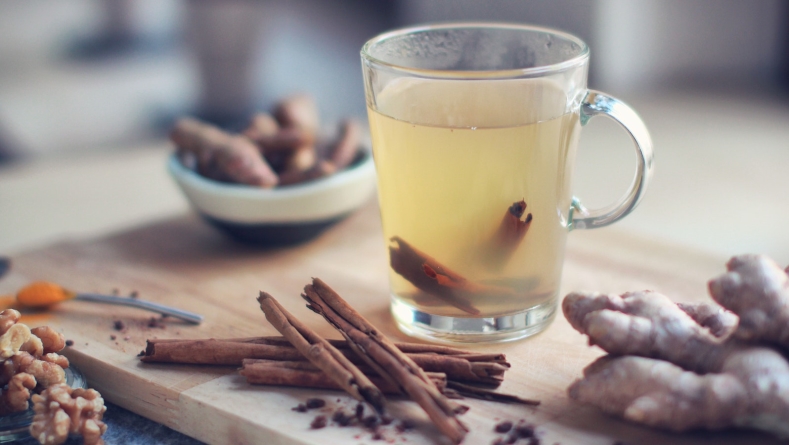
Brew some cinnamon tea.
This is a time-efficient, caffeine-free, and cozy way to incorporate some cinnamon to your diet. While you can buy tea packets at many stores, you can also make your own tea at home by adding 1 teaspoon of ground cinnamon to one cup of water or steeping a cinnamon stick in hot water for about 15 minutes.
Sprinkle it on.
For a tasty boost to your morning meals or everyday snacks, sprinkle cinnamon into your coffee, oatmeal, shakes, parfait, protein pancake batter, and other sweet and savory go-to's. You can also add it to your sweet potatoes or incorporate it into a homemade stew.
Find cinnamon-packed recipes.
Cinnamon can be a highlight of many popular fall and winter dishes, as well as a variety of cultural recipes. Indian curries, Moroccan tagine, and Vietnamese pho are a few of the many dishes that feature cinnamon [ 19
Summary
Cinnamon is a tasty, unsung source of antioxidants and anti-inflammatory compounds, and studies show that it can positively affect blood sugar, blood pressure, triglyceride level, high cholesterol, and weight management.
You can find cinnamon in a variety of forms, but be aware of the form and how much you take. These supplements may vary in toxic coumarin content, so make sure to pick the supplement that is right for you.
Disclaimer: The text, images, videos, and other media on this page are provided for informational purposes only and are not intended to treat, diagnose or replace personalized medical care.
Key takeaways
Cinnamon is a spice that has been shown to positively impact cardiovascular health, weight management, and heart health.
People with high blood sugar, blood pressure, triglyceride level, cholesterol, or high BMI may want to consider taking a cinnamon supplement.
Some side effects of too much cinnamon can include stomach pain and vomiting.
At Elo Health, we help you meet your nutrition needs by using science to recommend the right supplements for you–including how much cinnamon to take.
References
Kawatra P, Rajagopalan R. (2015). Cinnamon: Mystic powers of a minute ingredient. Pharmacognosy Res, 7(Suppl 1), S1-6.
https://doi.org/10.4103%2F0974-8490.157
Barceloux D. (2009). Cinnamon (Cinnamomum Species). Disease-a-Month, 55(6), 327-335.
https://doi.org/10.1016/j.disamonth.2009.03.003
.Lee, S., Wang, S., & Li, C. (2018). Anti-inflammatory effect of cinnamaldehyde and linalool from the leaf essential oil of Cinnamomum osmophloeum Kanehira in endotoxin-induced mice. Journal of Food and Drug Analysis, 26(1) 211-220.
https://doi.org/10.1016/j.jfda.2017.03.006
.Rao, P.V. & Hua Gan, S. (2014). Cinnamon: A Multifaceted Medicinal Plant. eCAM. 2014.
https://doi.org/10.1155/2014/642942
Wang, Y.H., Avula, B., Nanayakkara, D., Zhao, J., and Khan, I.A. (2013). Cassia Cinnamon as a Source of Coumarin in Cinnamon-Flavored Food and Food Supplements in the United States. J. Agric. Food Chem. 61(18), 4470–4476.
https://doi-org.ezproxy.bu.edu/10.1021/jf4005862
Suriyagoda, L., Janaki Mohotti, A, & Vidanarachchi, J.K., Kodithuwakku, S.P, Chathurika, M., Bandaranayake, P.C.G., Hetherington, A.M., & Beneragama, C.K. (2021). “Ceylon cinnamon”: Much more than just a spice. Plants People Plant. 3(34), 319-336.
https://doi.org/10.1002/ppp3.10192
.National Institutes of Health. (n.d) Cinnamon. U.S. Department of Health and Human Services. Retrieved 2022 October 31 from
https://www.nccih.nih.gov/health/cinnamon
Akilen, R., Tsiami, A., Devendra, D. (2012) Cinnamon in glycaemic control: Systematic review and meta-analysis. Clinical Nutrition, 31(5), 609-615.
https://doi.org/10.1016/j.clnu.2012.04.003
.Davis P. A.,,Yokoyama, W. (2011). Cinnamon intake lowers fasting blood glucose: meta-analysis. Journal of Medicinal Food. 14(9), 884-9.
https://doi.org/10.1089/jmf.2010.0180
Therapeutic Research Center. (n.d). Cassia Cinnamon. Natural Medicines. Retrieved October 31, 2022, from
https://naturalmedicines.therapeuticresearch.com/databases/food,-herbs-supplements/professional.aspx?productid=1002
.Jiang, J., Emont, M.P., Jun, H., Qiao, X., Liao, J., Kim, Dd., Wu, J. (2017). Cinnamaldehyde induces fat cell-autonomous thermogenesis and metabolic reprogramming. Metabolism, 77, 58-64.
https://doi.org/10.1016/j.metabol.2017.08.006
U.S. Department of Agriculture. (2019 April 1). Spices, cinnamon, ground. Retrieved November 6, 2022, from
https://fdc.nal.usda.gov/fdc-app.html#/food-details/171320/nutrients
Akilen, R., Tsiami, A., Devendra, D. (2012) Cinnamon in glycaemic control: Systematic review and meta-analysis. Clinical Nutrition, 31(5), 609-615.
https://doi.org/10.1016/j.clnu.2012.04.003
.Roussel, A.M., Hininger, I., Benaraba, B., Ziegenfuss, T.N., & Anderson R.A. (2009). Antioxidant effects of a cinnamon extract in people with impaired fasting glucose that are overweight or obese. J Am Coll Nutr. 28(1), 16-21.
https://doi.org/10.1080/07315724.2009.10719756
Jeewanthi, R.K.C., De Silva, A.M., Weddagala, T. (2020). Value Creation and Food Products of Cinnamon. In: Senaratne, R., Pathirana, R. (eds), Cinnamon (pp. 363–376). Springer, Cham.
https://doi-org.ezproxy.bu.edu/10.1007/978-3-030-54426-3_15
Byrne, Jane. (17 July 2008). Cinnamon-based packaging could prevent food spoilage. Bakery and Snacks.com.
https://www.bakeryandsnacks.com/Article/2008/07/18/Cinnamon-based-packaging-could-prevent-food-spoilage
Xing, Y., Xu, Q., Yang, S.X., Chen, C., Tang, Y., Sun, S., Zhang, L., Che, Z. & Li, X. (2016). Preservation Mechanism of Chitosan-Based Coating with Cinnamon Oil for Fruits Storage Based on Sensor Data. Sensors (Basel). 16(7), 111.
https://doi.org/10.3390/s16071111
Abubakar, A.R. & Haque, M. (2020). Preparation of Medicinal Plants: Basic Extraction and Fractionation Procedures for Experimental Purposes. J Pharm Bioallied Sci. 12(1), 1-10.
https://doi.org/10.4103%2Fjpbs.JPBS_175_19
Foster, Kellie. (2019 May 2). Inside the Spice Cabinet: Cinnamon. Kitchn.
https://www.thekitchn.com/inside-the-spice-cabinet-cinnamon-115560



